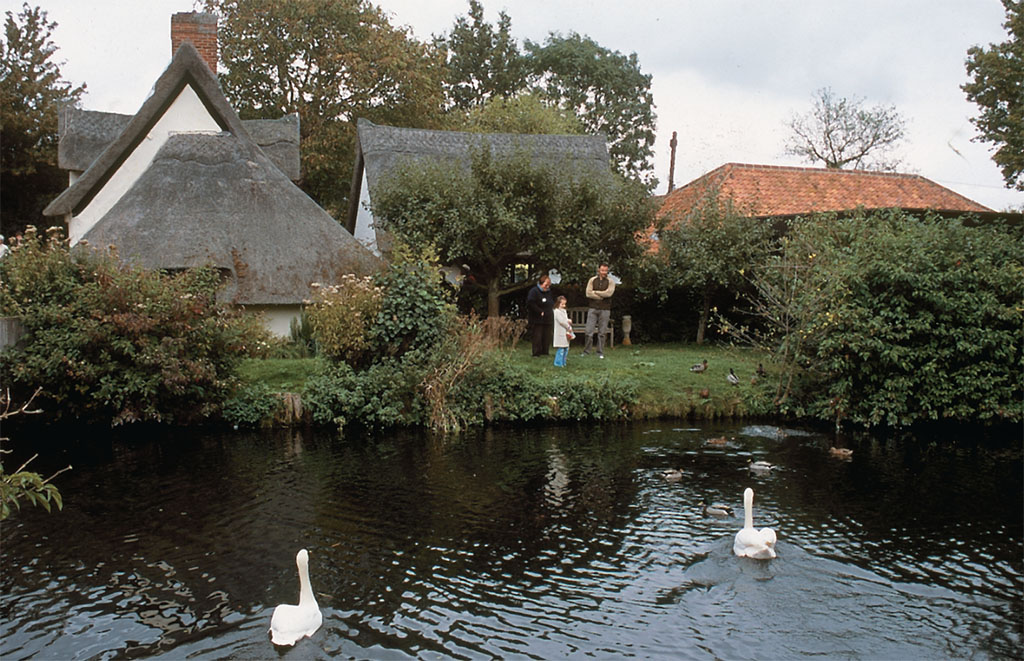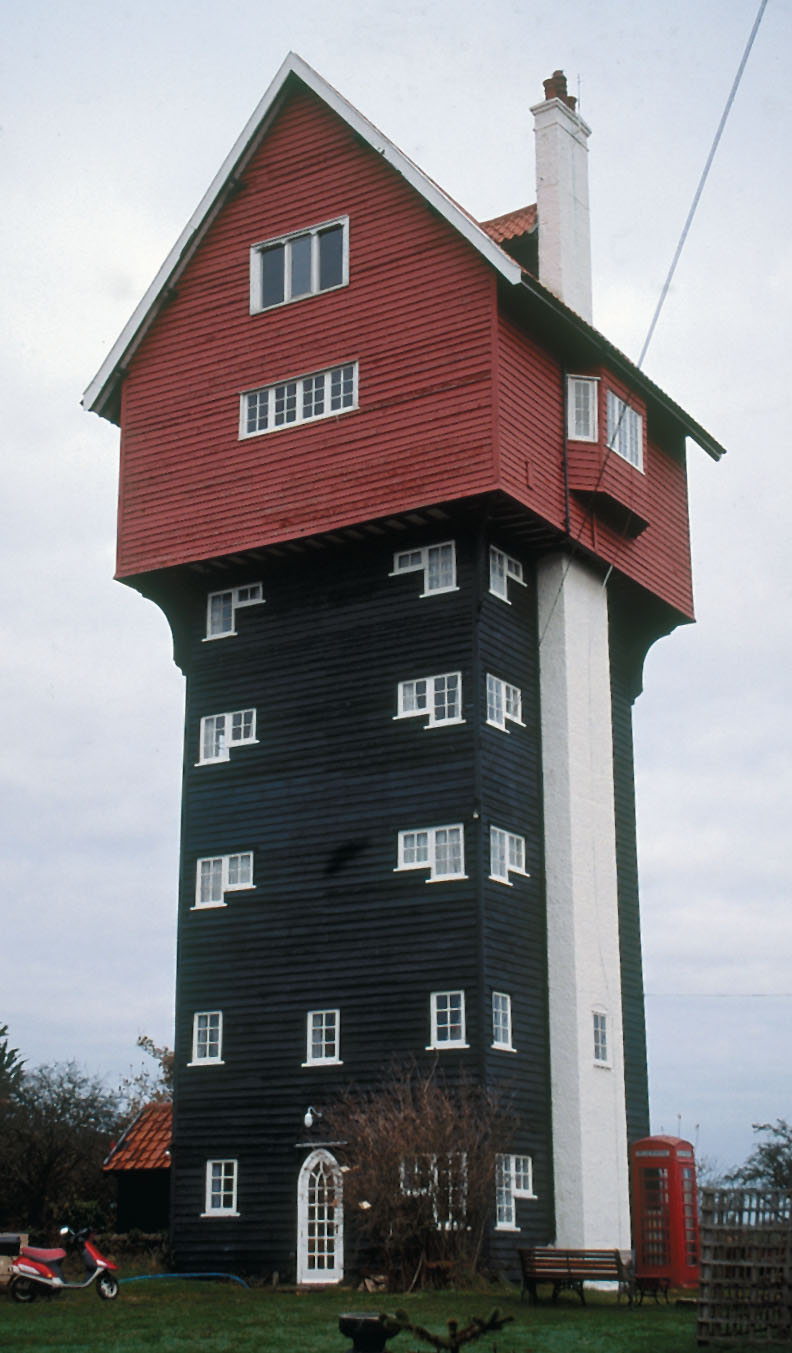
HERE’S AN EASY driving itinerary from London exploring the ancient kingdom of the East Angles. Travel distances are reasonable and the pace is set for exploring.
Day 1–Destination Suffolk
You can take a rental car from central London. But it’s probably more convenient to hire a car at Heathrow Airport, or to take the train out to a suburban station and pick up a car there. All the major rental companies can accommodate any strategy. However you get there, make for the A12 (Junction 28 on the M25) and head northeast to Chelmsford and beyond. This is a busy dual-carriageway, but it is the quickest way to put London and its sprawling suburbs behind.
Stop wherever takes your fancy. We’re in no hurry. There’s an old NT Grange Barn worth seeing in Coggeshall. You might run into Colchester, too—the first Roman settlement in England. Just north of Colchester, follow signs to Dedham and Flatford Mill, the heart of Constable Country along the River Stour.
You might think of Ipswich for the night, and visit the Christchurch Museum. Or carry on up the Stour to the market town of Sudbury, home of the Gainsborough Birthplace museum. Both towns have clearly identified Tourist Information Centres (TIC) that would be glad to help.
Day 2–The Suffolk coast to Norfolk
Recover the A12 heading north of Ipswich. Traffic thins considerably from here, as we follow the Suffolk coast. Stop at the shops of The Maltings, Snape, and detour down to the water at Aldeburgh. Follow the shore to Thorpeness past the House in the Clouds, and stop at Leinster to climb the ruins of the Premonstratensian abbey. The church at Blythburgh is impressive enough so you won’t miss it. It’s generally open for visitors to drop in. Then detour to Southwold, home of Adnam’s brewery.
You can carry on north to the port/resort of Lowestoft, or cut west to visit Beccles, the southernmost market town of the Norfolk Broads. Either way, the A146 leads west to Norwich, the county town and cathedral city of Norfolk. Either try an old city-center hotel like the Maids Head, or to locate at one of many options on the feeder routes into town. Again, the TIC in Norwich will be happy to help.
Day 3–Norfolk’s ancient Cathedral City
Leave the car today, and explore Norwich on foot. The place to start is Norwich Cathedral and its Close. The cobbled broad street out front is Tombland, loaded with cafes. Heading toward the river, take a left at Elm Hill and walk the famous medieval cobbled street. From the top of Elm Hill, all streets lead into Norwich’s huge open air market—the largest in England. The Mustard Museum, the Bridewell, Norwich Castle and a huge assortment of historic and commercial attractions await the day spent in Norwich.
[caption id="DiscoveringEastAnglia_img1" align="aligncenter" width="1024"]

DANA HUNTLEY
[caption id="DiscoveringEastAnglia_img2" align="aligncenter" width="792"]

DANA HUNTLEY
Day 4–The Norfolk Broads
Today’s excursion explores the eastern Norfolk wetlands known as The Broads. Take the A1151 a few miles up to Wroxham, “Capital of the Broads,” and discover for yourself. A river cruise is a great way to see river life on the Broads, even for a few hours. Route through the river villages east toward Great Yarmouth. You might visit the Broadland Conservation Centre at Ranworth. Every riverside village will have a pub (at least). Lunch in the beer garden with river travelers.
The northern and southern river systems connect at Great Yarmouth—part faded Victorian seaside resort and part working port servicing the North Sea. You can head back to Norwich most directly on the A47. Or detour down to Reedham Ferry, where the Broads cruisers are beginning to tie up for the night at the Ferry Inn, next to the only chain-link ferry in East Anglia.
Day 5–The North Norfolk Coast
There are two beautiful National Trust country homes along the A140 that leads north to Cromer. They don’t open early, but Blickling Hall and Felbrigg Hall are either or both worth timing your day around. Of different styles and eras, both are great history-filled country house visits. Before or after, wander around Cromer and Sheringham and some of the northern coast. Or cut the day short to return to Norwich and catch afternoon tea or a bit of shopping.
[caption id="DiscoveringEastAnglia_img3" align="aligncenter" width="1024"]

DANA HUNTLEY
Day 6–Turning to Cambridge
Let the traffic thin and take a midmorning departure on the A47 toward Kings Lynn. At Dereham, a short detour on the B1146 leads to Gressenhall Workhouse. Complete with working farm, Gressenhall is a fascinating piece of social history. Kings Lynn was once an important port for the Fens. See its ancient luster downtown on the quays of the Great Ouse estuary.
Turn south on the A10 this afternoon. Stop in Ely to visit majestic Ely Cathedral. Oliver Cromwell’s home is practically next door, too. Carry on to the university town of Cambridge.
Day 7–A Day to Visit Cambridge
A day to visit the colleges of the great university, and the community it supports. King’s College Chapel definitely is worth any hassle or crowd. The Fitzwilliam Museum is a world-class visit. There’s history around every corner, and magnificent collegiate architecture. Stroll along the Backs, and try a hand at punting on the River Cam.
You might take a short ride out to Maddingley, to the American Military Cemetary, where hundreds of World War II servicemen are buried after action out of East Anglian airfields.
Day 8–Back to Town?
The standard route to London is the M11, down to the M25. Or take the road less traveled and follow the A10 south to the beltway. Whether you are going on to London or heading straight to the airport, it’s a straight line now to the car rental return. Or, of course, you could catch a train for Scotland.





Comments